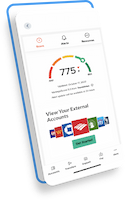When it comes to banking, you want to have a checking account and a savings account.
A checking account is best used to hold money that goes toward bills and everyday purchases. But you may not want to keep too much money in there, especially if you have a linked debit card (because if the card gets stolen, it could compromise the safety of the account). Plus, many standard checking accounts don’t offer interest on your money.
Instead, you may want to put larger sums of money in a savings account. You can use this space to save for an emergency fund or future purchases, all while earning interest on your money. And if you’re looking for a convenient, secure, digital-first option with a leading Annual Percentage Yield (APY), an online savings account with Quontic is an option.
Here’s what you need to know about all your options.
What is a Savings Account?
To put it simply, a savings account is where you store money with a bank, credit union or other financial institution. You may open this type of account with the intention of saving money you don’t plan on touching for a while and maybe even earning some interest on it. This interest is known as the annual percentage yield, or APY.
Perhaps you have short-term savings goals, like a weekend getaway to Las Vegas. Or you have your sights set on a longer-term financial goal, like saving for the down payment on a house. Or maybe you’re just looking to kickstart your emergency fund.
Regardless, it’s essential that you have a secure place to save and grow your money.
4 Types of Savings Accounts
There are different types of savings accounts available on the market, depending on your wants and needs.
For instance, if you like easy access to your money with few restrictions, a regular savings account may likely work for you. On the other hand, if you don’t mind having less regular access to your money in exchange for a higher interest rate on your savings, there’s also an account for you.
You want to choose a safe place for your money, as well. Look for savings accounts at banks and financial institutions that are members of the Federal Deposit Insurance Corporation (FDIC). In the event an FDIC-insured bank fails, your eligible account will be protected up to $250,000.1 (Similarly, the National Credit Union Administration, or NCUA, insures eligible accounts at credit unions.)2
The good news? You don’t have to choose only one type of account. In fact, you can have multiple savings accounts to help you reach your goals.
Here are four of the best types of savings accounts.
1. Traditional Savings Accounts
A traditional or standard savings account is a place where you can save money and earn interest on it. Most banks and financial services providers offer some type of baseline savings account.
Some bank accounts might require a minimum deposit to open it. There might be a traditional savings account minimum balance requirement, too (although this could be as low as $5). Some banks also charge monthly maintenance fees, though they can sometimes be waived if you keep a certain amount of money in your account or complete other actions. If you go with a Quontic savings account, you won’t have to worry about monthly service fees — you’ll pay $0, regardless of your balance.3
When it comes to interest rates for these types of accounts, the figures are a little underwhelming: The national average is 0.10%, according to the FDIC4. With that said, it beats the alternative of not having your money in an account at all.
If you’re just getting started with banking, a traditional savings account may be a good, no-frills place to keep your money.
2. High-Yield Savings Accounts
If you’re basing your decision on which type of account has the highest interest rate, this next account is another option.
A high-yield savings account, also known as a high-interest savings account, is a place where you can keep your money and earn more interest on it. Some accounts offer debit cards, so you can easily access your money, too.
Compared to a traditional savings account, you may make more on your money; however, you’ll need to be organized and aware of any stipulations. Usually, you have to abide by certain rules with these types of accounts. For example:
- You might be required to have a certain amount of money in your account at all times to earn that higher interest rate.
- You may only transfer or take out money a certain number of times per statement cycle.
- You might be responsible for monthly maintenance fees.
- You might need to maintain regular deposits.
Specific to rates, you’ll encounter guidelines there, too. For instance:
- Certain rates might only be available for new account holders.
- Rates might go up or go down depending on how much money you have in your account.
- Higher rates might only be for the first year or so of opening an account, and then drop to a lower amount.
- Interest rates for high-yield accounts, just like other accounts, are variable (unless they’re listed as fixed).
You’ll want to take a close look at the high-yield account details — and make sure they will work for your lifestyle — before opening one. You might also be interested in opening a high interest checking account, which also requires following certain rules but offers a higher interest rate than traditional ones.
Interest rates and rules vary for these types of accounts. Sometimes they require a four-digit opening deposit. Quontic, on the other hand, offers a High-Yield Savings account that earns an impressive 2.05% APY5. You only need $100 to open the account, and there are no monthly service fees.
3. Certificates of Deposit
A certificate of deposit (CD) is a savings account where you earn interest on your money by holding it for a fixed period of time. Terms (the amount of time you have the account for) and interest rates vary, with rates typically increasing along with the length of the CD.
A CD may be a good choice for someone who wants a secure place to grow their money and won’t need it anytime soon. The latter is important, because you may be charged early-withdrawal penalties if you need to access your money before the maturity date — so make sure you can afford to put money in this type of account.
Nationwide, the average APY for a six-month CD is 0.27%, according to the FDIC. Compare that to Quontic, which offers a six-month CD term at 1.70% APY.6 Moreover, you can earn up to 3.20% APY with a Quontic Certificate of Deposit and open an account with as little as $500 for a 5 year6 CD. Terms start at six months.
4. Money Market Accounts
To be clear, a money market account isn’t quite a savings account. However, a money market account shares commonalities of both checking and savings accounts.
Like high-yield savings accounts, they tend to offer a higher interest rate. You can also more easily access your money and typically have a debit card for the account. On the flip side, you’ll need to maintain a minimum daily balance to earn the higher rates.
You can earn 2.00% APY7 with a Quontic Money Market account — 14x the national average.
Other Types of Savings Accounts
In addition to these savings accounts, there are other accounts designed to help you save money.
Take for instance, brokerage or investment accounts. These accounts allow you to invest in mutual funds, bonds, stocks and more. A 529 college savings plan and individual retirement accounts, or IRAs (think: a Roth IRA), are just a couple of examples.
These accounts, like standard savings accounts, are available through traditional banks and many online institutions as well.
Common Questions When Choosing and Opening a Savings Account
1. How old do you have to be to open a savings account?
Typically, you need to be at least 18 years old to open an account. However, a parent can manage a custodial for or joint account with a minor, and then transfer it to them once they’re of legal age.
2. What account has the highest interest rate?
You’ll want to consider several factors to determine which type of savings account has the highest rate. For instance, a high-yield savings account might offer a generous APY but require you to keep $15,000 in it. Alternatively, a CD might offer a standard market rate, and you’ll only need to keep a small amount of money in it for a year or less.
The point being, don’t get too excited about exclusively pursuing a high interest rate until you know, and can meet, the account requirements.
3. Can you have multiple types of savings accounts at the same bank?
Yes! It doesn’t have to be an either-or situation. As long as you meet the requirements of opening a specific account, you can have a traditional savings account and a CD at the same bank, for example.
The Best Type of Savings Account for You
Remember that the “best” kind of savings account will vary from person to person. Just getting started with one bank account — any bank account — will help you get a jumpstart on your savings goals. Learn more about the different types of savings accounts and how to choose the right option for you. Get started by opening an account with Quontic by clicking here.
Footnotes:
1FDIC insurance is applicable to eligible deposit accounts and up to the maximum allowed by law . Learn more at FDIC: Deposit Insurance https://www.fdic.gov/resources/deposit-insurance/.
2Learn more about NCUA insured accounts. https://www.mycreditunion.gov/share-insurance
3View the full list of fees that could occur on your account here: https://www.quontic.com/schedule-of-fees/. Information is as of August 26, 2022.
4National Average APY information as of August 26, 2022, according to the FDIC National Rates and Rate Caps.
5High Yield Savings. Ask for details. Minimum $100 to open account. Additional terms, conditions, fees & exclusions may apply. Rates may change without notice. Fees could reduce earnings. APY means Annual Percentage Yield. Information is as of November 21, 2023.
6Certificate of Deposit. Ask for details. Minimum $500 to open account. Withdrawals before the maturity date are subject to penalties. Fees could reduce earnings. Additional terms, conditions, fees & exclusions may apply. APY means Annual Percentage Yield. Information is as of August 26, 2022.









